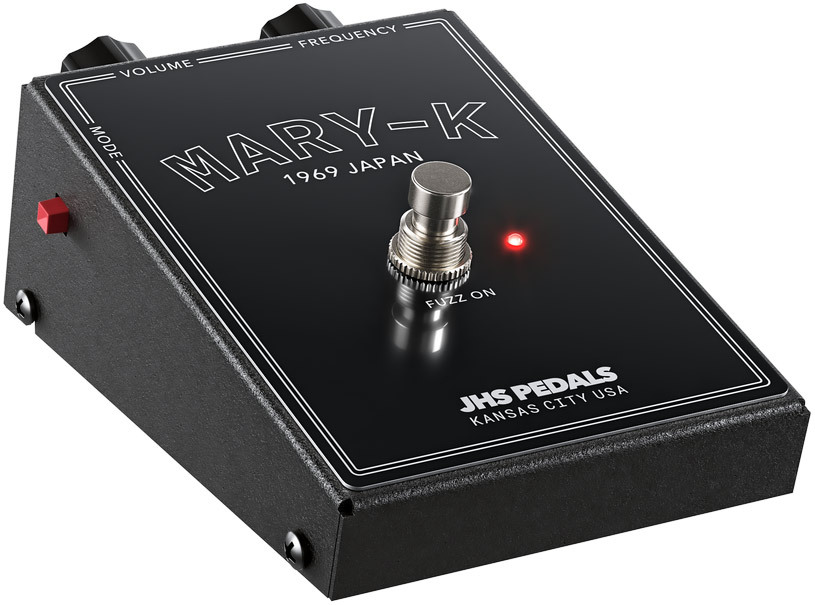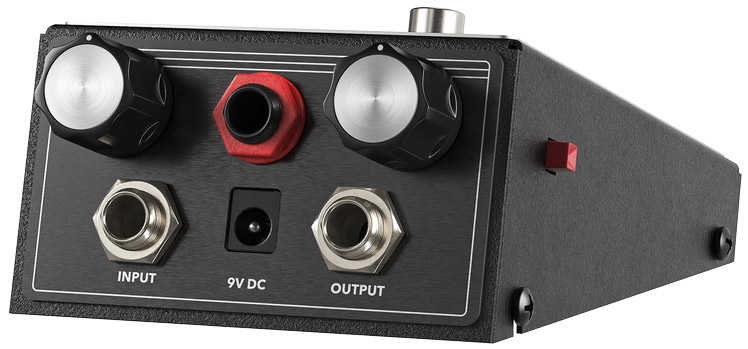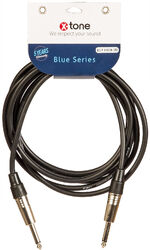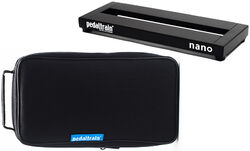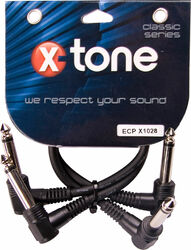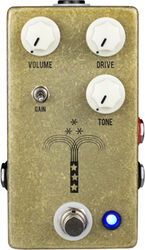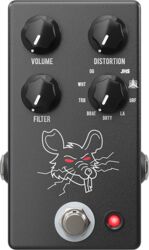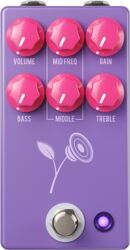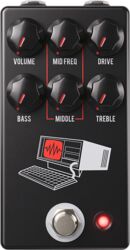Uw mand
Jhs Legends Of Fuzz Mary-K
- Lees recensies (0)
- Gerelateerde accessoires
- Vergelijkbare producten
- Gratis bezorging
- Gegarandeerd lage prijzen
- Tevreden of terugbetaald
- 3 jaar garantie
In voorraad
1 Kamer beschikbaar.
binnen 24 uur leverbaar
Voorraad in de winkel
Niet verkrijgbaar in de winkel
Het merk Jhs
Leer meer over het merk Jhs en ontdek de volledige catalogus.
Koopgids voor basgitaareffecten
Hoe navigeer je door de overvloed aan effectpedalen die op de markt verkrijgbaar zijn? Star's Music maakt de balans op, volg deze koopgids!
Neem contact op met een deskundige
Onze muzikanten en enthousiaste teleconsulenten staan ??klaar om al je vragen te beantwoorden.
Overdrive/distortion/fuzz effectpedaal
The "Legends Of Fuzz'' series is a tribute to the most important fuzz circuits ever made. It is a way of ensuring that the stories of these effects live on in the music that you are going to make.
From the earliest days of fuzz in the mid-60's London scene to the 1990's ex-Soviet military factories that brought the Big Muff back to life, fuzz tells a story, and that story includes guitarists just like you. There is nothing more primitive than plugging your guitar into a vintage fuzz circuit; it is raw, untamed, and so pure that it pushes the boundaries of what your instrument can accomplish. Plug into a fuzz and plug into sixty years of beautifully broken sound.
Kay Musical Instruments was founded by Henry “Kay” Kuhrmeyer on July 1, 1931. Although Henry quickly shifted production focus to all types of stringed instruments (including basses, violas and guitars), they didn’t enter the guitar pedal market until the late 1960s with a series of knobless, treadle-based delightfully odd plastic pedals. Each of these four units (the Fuzz Tone F1, Tremolo T1, Wah Wah W1 and Bass Boost B1) were housed in knobless, treadle-based enclosures allowing one parameter of each effect to be adjusted by foot.
The Kay Fuzz Tone was most likely released in late 1968/early 1969. Initially designed as a low-cost-version of the Shin-ei/Univox Superfuzz, this fuzz is one of the Edge’s go-to pedals. Fifty-four years later, JHS is releasing our spin on the Kay Fuzz Tone : the JHS PEDALS Legends Of Fuzz Mary-K with added knobs and an expression pedal output for those who want to use it as it was originally intended.
Rather than using a treadle chassis, Mary-K offers the option to control the Frequency knob with an expression pedal (as Nektar NX-P or Roland EV-5 expression pedals).
Some expression pedals may introduce a hum/noise into the signal chain in high electromagnetic interference environments. Therefore, it is recommend using plastic chassis expression pedals with short cables to avoid unwanted noise in a high EMI environment.
From the earliest days of fuzz in the mid-60's London scene to the 1990's ex-Soviet military factories that brought the Big Muff back to life, fuzz tells a story, and that story includes guitarists just like you. There is nothing more primitive than plugging your guitar into a vintage fuzz circuit; it is raw, untamed, and so pure that it pushes the boundaries of what your instrument can accomplish. Plug into a fuzz and plug into sixty years of beautifully broken sound.
Kay Musical Instruments was founded by Henry “Kay” Kuhrmeyer on July 1, 1931. Although Henry quickly shifted production focus to all types of stringed instruments (including basses, violas and guitars), they didn’t enter the guitar pedal market until the late 1960s with a series of knobless, treadle-based delightfully odd plastic pedals. Each of these four units (the Fuzz Tone F1, Tremolo T1, Wah Wah W1 and Bass Boost B1) were housed in knobless, treadle-based enclosures allowing one parameter of each effect to be adjusted by foot.
The Kay Fuzz Tone was most likely released in late 1968/early 1969. Initially designed as a low-cost-version of the Shin-ei/Univox Superfuzz, this fuzz is one of the Edge’s go-to pedals. Fifty-four years later, JHS is releasing our spin on the Kay Fuzz Tone : the JHS PEDALS Legends Of Fuzz Mary-K with added knobs and an expression pedal output for those who want to use it as it was originally intended.
Rather than using a treadle chassis, Mary-K offers the option to control the Frequency knob with an expression pedal (as Nektar NX-P or Roland EV-5 expression pedals).
Some expression pedals may introduce a hum/noise into the signal chain in high electromagnetic interference environments. Therefore, it is recommend using plastic chassis expression pedals with short cables to avoid unwanted noise in a high EMI environment.
Lire la suite
Technische Specificities
- Fuzz Ja
- voor elektrische gitaar Ja
- JHS PEDALS Legends Of Fuzz Mary-K
- SKU JHS Pedals JHSLOFMAR
- Vintage-style fuzz inspired by Kay Fuzz Tone
- Compact effect pedal
- Made in USA
- 2023
- Controls & connections : see pictures & manual
- Power supply via optional 9V DC adapter 2.1 x 5.5mm barrel plug; polarity: (-) center
- Current draw 4 mA
- Doesn't work with battery
- 144 x 92 x 51 mm
- 380 g
- Manual : https://bit.ly/3yJlvMi
Meer specificaties
Minder specificaties
